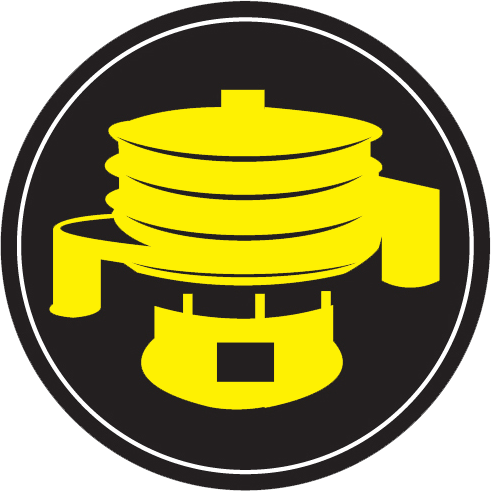Uniswap Token Price Trends and Liquidity Strategies
For anyone engaged in the decentralized finance (DeFi) space, staying updated on Uniswap token price trends is crucial. This article provides a detailed overview of price movements and liquidity strategies across both single-chain and multi-chain environments. Utilizing a reliable price tracker can simplify this discovery process, ensuring you make informed trading decisions.
Uniswap operates as a DEX (decentralized exchange), utilizing an innovative blockchain system that facilitates seamless swaps without intermediaries. By leveraging the Uniswap platform, users can access a robust liquidity pool, empowering them to trade various tokens while benefiting from competitive rates. Being part of the web3 ecosystem, Uniswap continues to enhance its functionalities, such as introducing bridge capabilities to connect different blockchains.
Detailed analysis through an explorer board allows traders to monitor liquidity and market dynamics effectively. Insights into price trends and volume can lead to optimized trading strategies. As a result, embracing these tools will help traders maximize profits while contributing to the overall liquidity of the Uniswap platform. This article breaks down the best practices for engaging with Uniswap, making your trading experiences more rewarding.
Analyzing Uniswap Token Price Movements
To monitor Uniswap token price movements effectively, utilize real-time analytics tools that provide instant access to price info and transaction data. Platforms like The Block and Dune Analytics offer dashboards specifically designed for tracking Uniswap’s liquidity and pricing dynamics. These tools allow you to analyze liquidity positions and discover potential yield farming opportunities using LP tokens.
Employ price tracking modules to screen token activities and identify significant patterns. By focusing on smart contract interactions, you can gain insights into trading routes and monitor transaction volumes. Consider integrating a blockchain analytics tool that specializes in DeFi projects, which will facilitate better decision-making in asset management.
Create a connection with liquidity pools to execute trades efficiently. Utilize a transaction execution script that optimizes routes, ensuring minimal slippage when swapping tokens. This tool can significantly enhance your trading strategy by providing a clearer picture of price fluctuations and liquidity availability.
Additionally, employing a yield management system can optimize your returns from Uniswap. Regularly assess your farming positions and adjust your strategies based on real-time data analytics. This proactive management of your assets within the DeFi space will help control risks and maximize your portfolio’s potential.
For further insights and comprehensive data regarding Uniswap and other DeFi platforms, refer to reliable sources such as The Block. This site offers in-depth analysis and up-to-date information on token price trends and liquidity strategies across the blockchain ecosystem.
Understanding Liquidity Pools on Uniswap
Liquidity pools are fundamental to how Uniswap operates, allowing users to swap tokens seamlessly. These pools contain reserves of different tokens contributed by liquidity providers. By supplying tokens to the pool, you earn a portion of transaction fees generated from swaps, making it a smart way to grow your wallet.
Automation tools play a key role in managing these liquidity pools. By utilizing scripts, you can monitor price movements in real-time and execute transactions when specific conditions are met. This proactive approach ensures better control over your investments and the ability to capitalize on market trends.
Each transaction on Uniswap occurs on-chain, with smart contracts facilitating swaps without the need for a central authority. This decentralized architecture enhances security by minimizing the risk associated with a single point of failure. Liquidity providers can also use a locker to safeguard their tokens while earning fees.
Many tools are available for liquidity pool analysis. A viewer can visualize the pool’s performance, showcasing metrics like liquidity depth and price fluctuations. Connecting these tools with a wallet allows for a seamless experience, enabling real-time tracking and adjustments to your liquidity positions.
In addition, bridges can facilitate movements of assets between different blockchain networks. This capability expands access to various liquidity pools and enhances opportunities for profit through cross-chain swaps.
Utilizing the Uniswap Token Discovery Explorer
To maximize your experience with Uniswap, leverage the Token Discovery Explorer effectively. This tool acts as a comprehensive dashboard for monitoring token pairs, providing valuable insights into price trends and liquidity metrics.
Begin by accessing the multi-chain feature, allowing you to view and compare assets across various networks seamlessly. The interface offers a user-friendly panel, making it easy to navigate different sections focused on staking opportunities and farming potentials. Utilizing these features can enhance your yield generation.
- Estimation Module: This helper tool calculates potential returns based on current swap fees and liquidity depths.
- Automated Tracking: Set up alerts for price changes and liquidity dips to stay informed without constant monitoring.
- Lockers: Explore options for secure token holding, helping you manage your assets more effectively.
For users engaged in decentralized finance, the dashboard’s on-chain data provides transparency. Analyze historical price trends and assess the performance of specific liquidity pairs, enhancing your decision-making process.
Incorporating these strategies can significantly improve your trading outcomes, whether you are swapping tokens or providing liquidity. Engage with the Uniswap Token Discovery Explorer daily to stay ahead in the dynamic DeFi space.
Strategies for Maximizing Liquidity Position Returns
Utilize smart routing in your transactions to reduce slippage and gain better prices for your liquidity positions. Employ platforms that analyze multiple routes across multi-chain exchanges. This helps optimize your trades while ensuring you access favorable conditions.
Consider staking your liquidity provider (LP) tokens when possible. This allows you to earn additional rewards on top of the trading fees. Research the best decentralized finance (DeFi) protocols that offer staking options for your specific LP tokens.
Implement a real-time monitoring system to keep an eye on your positions. Use tools that provide alerts for price movements, liquidity changes, and profitability estimates. This will enable you to adjust your strategy accordingly.
Frequent estimation of your liquidity pool performance is key. Assess your yields regularly and adjust your capital allocations to maximize returns. You can use dashboards that aggregate data from various DeFi platforms for comprehensive tracking.
Control your exit strategies to avoid unnecessary losses. Set clear profit-taking and stop-loss levels before engaging in liquidity provision. This will help safeguard your investment against sudden market fluctuations.
Lastly, seek platforms that streamline approval processes for transactions and transfers. This reduces waiting time and increases your ability to act swiftly in changing market conditions. By implementing these strategies, you can effectively enhance your returns in the Uniswap liquidity framework.
Evolving Token Price Patterns in Decentralized Finance
Utilize advanced tools like price trackers and on-chain explorers to monitor Uniswap token trends effectively. This approach grants detailed insights into market behaviors and enhances transaction strategies.
Integrate automation in managing your liquidity positions. Automated farming in DEX pools can optimize your returns while minimizing gas fees. Regularly update your wallet protocols to accommodate these changes seamlessly.
- Analyze transaction patterns to identify profitable paths in the liquidity landscape.
- Use fee structures to evaluate the cost-effectiveness of your trades on the blockchain.
- Keep your access points secure, ensuring that your assets remain protected while you engage in DeFi activities.
A comprehensive overview of token price fluctuations reveals that external factors, such as market sentiment and regulatory changes, significantly influence crypto valuations. By staying informed about these elements, you can adjust your positions strategically.
Emphasize the strength of community-driven liquidity pools. These pools often foster better price stability and enhance your ability to trade efficiently. Establish relationships within these communities for shared insights and strategies.
- Regularly assess the liquidity of your favorite tokens.
- Engage in farming opportunities that align with your risk tolerance.
- Leverage analytics tools for real-time market assessments.
Adaptive strategies in monitoring and reacting to price shifts ensure better control over your investments. Engage actively with the DeFi ecosystem by exploring various tokens, utilizing analytics tools, and participating in governance where applicable. This proactive stance will consistently yield better outcomes in your trading endeavors.
Tools for Monitoring Uniswap Liquidity Trends
Leverage advanced tools to monitor Uniswap liquidity trends and make informed trading decisions. Start with platforms that offer on-chain analytics. These interfaces provide real-time data on liquidity pools, swap pairs, and pricing, enabling effective contract execution.
One recommended tool is a liquidity dashboard that displays live liquidity metrics, along with farm management options for optimizing yield. This helps users spot emerging trading opportunities and manage positions efficiently.
A valuable feature to consider is the routing engine. This tool ensures optimal trade execution by identifying the best path for swaps across different pairs, minimizing slippage and maximizing returns. Incorporate liquidity estimation functions to assess potential profitability before engaging in trades.
Another essential aspect is using on-chain explorers, which provide in-depth insights into liquidity movements, trading volume, and user activities on the Uniswap platform. These resources assist in tracking trends over time and evaluating market sentiment.
For aggregated data and analytics, utilize platforms that offer liquidity info alongside farming opportunities. This centralizes information, allowing better control over investments and informed decision-making.
To bridge the gap between various DeFi protocols, look for solutions that offer cross-chain capabilities. This ensures seamless asset transfers and expands trading possibilities beyond Uniswap.
Utilize the following table to compare key features of different monitoring tools:
| Tool Name | Key Features | Link |
|---|---|---|
| Uniswap Info | Real-time pricing, liquidity metrics | uniswap exchange |
| Liquidity Dashboard | Position management, yield farming | uniswap exchange |
| On-Chain Explorer | Market depth, trading volume analysis | uniswap exchange |
| Routing Engine | Optimal swap execution, minimal slippage | uniswap exchange |
By utilizing these tools, you can effectively monitor liquidity trends on Uniswap and enhance your trading strategy.
Q&A:
What factors influence the price trends of Uniswap tokens?
The price trends of Uniswap tokens are shaped by several factors, including overall market sentiment, trading volume, and the liquidity pools available on the platform. Additionally, changes in protocol governance, such as proposals or adjustments made by the community, can lead to fluctuations in token value. External variables such as the performance of other cryptocurrencies and regulatory developments may also impact pricing dynamics.
How do liquidity approaches affect trading on Uniswap?
Liquidity approaches on Uniswap play a crucial role in facilitating smooth trading experiences. The automated market maker (AMM) model allows users to provide liquidity by depositing pairs of tokens into pools. This enables traders to execute swaps without relying on traditional order books. The size and health of these liquidity pools directly affect slippage and trading costs, making it important for liquidity providers to maintain balanced pools to ensure efficiency in transactions.
What is the uniswap token approval panel, and how does it work?
The Uniswap token approval panel is a feature that enables users to manage permissions for their tokens when interacting with exchanges and liquidity pools. When a user wants to swap, provide liquidity, or stake tokens, they must approve the smart contract to access their tokens. This panel provides an interface that allows users to set and revoke these permissions easily, ensuring better control over their assets while maintaining security and transparency in transactions.
Can you explain the importance of liquidity in relation to Uniswap’s success?
Liquidity is vital to Uniswap’s success, as it directly impacts user experience and trading efficiency. High liquidity in pools reduces slippage, meaning users can execute trades closer to the expected price. This, in turn, attracts more users to the platform, increasing overall trading volume. Liquidity providers earn fees from trades occurring in their pools, creating a symbiotic relationship where sufficient liquidity benefits both traders and providers. Without adequate liquidity, Uniswap would struggle to maintain its appeal as a decentralized exchange.

 Grinding Media Depot
Grinding Media Depot Blade Depot
Blade Depot Tank Provider
Tank Provider Process Equipment: Mix, Disperse, Mill, Sieve, Filter
Process Equipment: Mix, Disperse, Mill, Sieve, Filter Packaging Equipment: Fill, Label, Cap, Close, Accumulate, Seal
Packaging Equipment: Fill, Label, Cap, Close, Accumulate, Seal Laboratory Equipment
Laboratory Equipment Abrasion Resistant/Non-Metal: Parts, Coatings, Linings
Abrasion Resistant/Non-Metal: Parts, Coatings, Linings Miscellaneous Medias: Polish, Round, Precision, Ballast etc.
Miscellaneous Medias: Polish, Round, Precision, Ballast etc. Grinding Media Depot
Grinding Media Depot Blade Depot
Blade Depot Tank PROvider
Tank PROvider Processing Equipment
Processing Equipment Packaging Equipment
Packaging Equipment Laboratory Equipment
Laboratory Equipment Abrasion Resistant/Non-Metal
Abrasion Resistant/Non-Metal Deco Bead Depot
Deco Bead Depot Raw Materials
Raw Materials Milling Equipment
Milling Equipment Screening/Sieving Equipment
Screening/Sieving Equipment Filtering Equipment
Filtering Equipment Custom Parts
Custom Parts Tank Washing
Tank Washing Powder Blending
Powder Blending Polyblade
Polyblade Toll Processing
Toll Processing